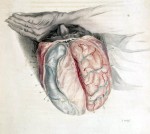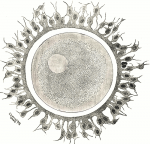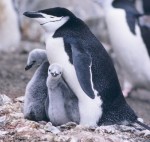Biology is not fully reducible to genetics, and behavior is not fully reducible to biology. I've found myself using that adage more often in conversation, so I thought perhaps it would be helpful to mention and unpack here. As far as I know, that particular phrasing is mine, but the sentiment I believe is fairly representative of what biologists think. While there may be a popular expectation finding genes for every personality trait, the reality is that genes can only have so much influence. That should be apparent … [Read more...] about Science Corner: The Skinny on Genes
homosexuality
Science in Review — September 2013
This is the fifth and final post in a series on the topic of biology and sexual orientation. I set out to write this series primarily as a forcing function to update my own understanding of the evidence for biological mediation of sexual orientation. After reviewing studies on heritability and the biological pathways, I have satisfied myself that there is a biological dimension to orientation. So now I suppose the question becomes: what does that mean? For starters, let's consider what that means with respect to … [Read more...] about Science in Review — September 2013
Science in Review — August 2013
This is the fourth post in an ongoing series on the topic of biology and sexual orientation. Last month we talked about the evidence for the heritability of sexual orientation. The upshot of that seems to be that it is partially correlated with certain genes, or with inheritance in general (as estimated by twin studies), but that genetics only tell part of the story. There is still plenty of room for contributions from other factors post-conception. However, that doesn't mean that there aren't other biological … [Read more...] about Science in Review — August 2013
Science in Review — July 2013
This is the third post in an ongoing series on the topic of biology and sexual orientation. Having dealt with what I felt were some necessary preliminaries, we now turn our attentions to the main questions about the biological mediation of sexual orientation, starting with issues of genetics and heritability. To what extent is sexual orientation passed from parent to child, and how much of that inheritance can be attributed to genes? Since we are restricting ourselves to human studies, that limits the kinds of … [Read more...] about Science in Review — July 2013
Science in Review — June 2013
This is the second post in an ongoing series on the topic of biology and sexual orientation. Last month, I talked about how the longstanding philosophical questions of the mind-body problem might inform or bias our understanding of how biology mediates sexuality. There was some question as to whether having a monist or dualist perspective is as significant to the topic as I theorized, but I still think it is relevant. In fact, I wonder whether the assumptions that stem from those perspectives are so fundamental to … [Read more...] about Science in Review — June 2013




